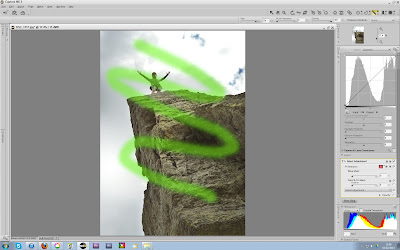Below is a short clip of an audience watching my trailer and filling out a questionnaire which can be seen below the video.
Monday 21/01/2013, thirty people age range 17-19, 15 males 15 female watched my film trailer and supplied feedback. Whilst they are not my ideal audience (as they are not all into adventure-sports) they are within the correct age bracket and can help produce fairly accurate feedback.
Here is the computer-template of the questionnaire with answers represented in numbers. My comments on the results can be seen in red text.
Results:
Aim For Eddie Trailer – Jamie Prout
Please circle your answers
Was it clear this preview was a
trailer?
YES (14)
/ SLIGHTLY (13) /
NO (3)
Despite following many conventions of trailers it seems as if some people were left uncertain that it was a trailer. This may have been due to the slightly niche genre of the film and the fairly short titles at the end that presented release dates etc.
Did my trailer conform to the
action-adventure genre?
YES (24)
/ SLIGHTLY (4) /
NO (1)
It appears I managed to follow conventions of my genre fairly well, leaving almost no confusion over what elements were involved in the trailer.
Did the music suit the trailer?
YES (28)
/ SLIGHTLY (2) /
NO (0)
As expected the music helped build tension as well as being perceived as 'cool' or recognisable by the audience.
Did the increase in tension and tempo
engage you?
YES (16)
/ SLIGHTLY (10) /
NO (4)
I am slightly surprised by this. Elapsed time of shots decreased towards the climax, the music crescendo added to the build up and the content of the trailer became increasingly intense. Despite this, a fair amount of people were not fully engaged. The environment the audience were in was very informal and sociable - it is likely this environment had an effect on their viewing as their reactions will not just be towards the trailer, but also towards their friends present. This, as well as how the audience were not all adventure-sportsmen, help explain how they were not as engaged as I had hoped.
Now you have seen the trailer, would
you look forward to seeing the feature-length film of it?
YES (17)
/ SLIGHTLY (10) /
NO (3)
I am fairly pleased at this result as these people are not my ideal target demographic. This result however helped me realise that future films will be more successful if they could reach out to a larger audience.
Do you have any recommendations on
how to improve the trailer?
Most common points:
(17) Storyline was not particularly deep or detailed: A group of athletes performing sports on a road trip and someone almost dies.
About half of the audience were not fully satisfied with the narrative presented. This is likely due to how the audience here are not my ideal target demographic and how in the questionnaire I wrote "Did my trailer conform to the action-adventure genre?" in order to keep the questionnaire short, but in reality I have been working for a trailer in the 'action-adventure docu-drama' genre. If the audience had known the trailer was more docu-drama based they may have enjoyed the small details and somewhat basic general storyline more.
(5) Almost no dialogue in trailer, would relate to characters more if I heard them talk.
My inconsistency in trailer dialogue seems to have let me down for five people in audience. Some form of narration or dialogue may have helped my trailer sell the characters and become more relatable. It is also worth noting that my ideal target audience were not available so non-a mountaineering audience of a suitable age participated in my questionnaire instead as I had access to them and they are fairly similar to my ideal audience.
This graph shows the individual values for each question (an "Agree" answer is always the positive response):
This graph shows the total attitude towards the trailer based on the questionnaire results:

In conclusion, my audience feedback has been key in helping me realise how to effectively plan and produce future projects. The feedback has been particularly helpful for realising that increasing audience numbers is crucial and can be achieved by widening the target audience when planning. It has taught me that niche film genres, like this project's film, have smaller audiences, appeal to a smaller audience and have smaller resources for production as a result.

































